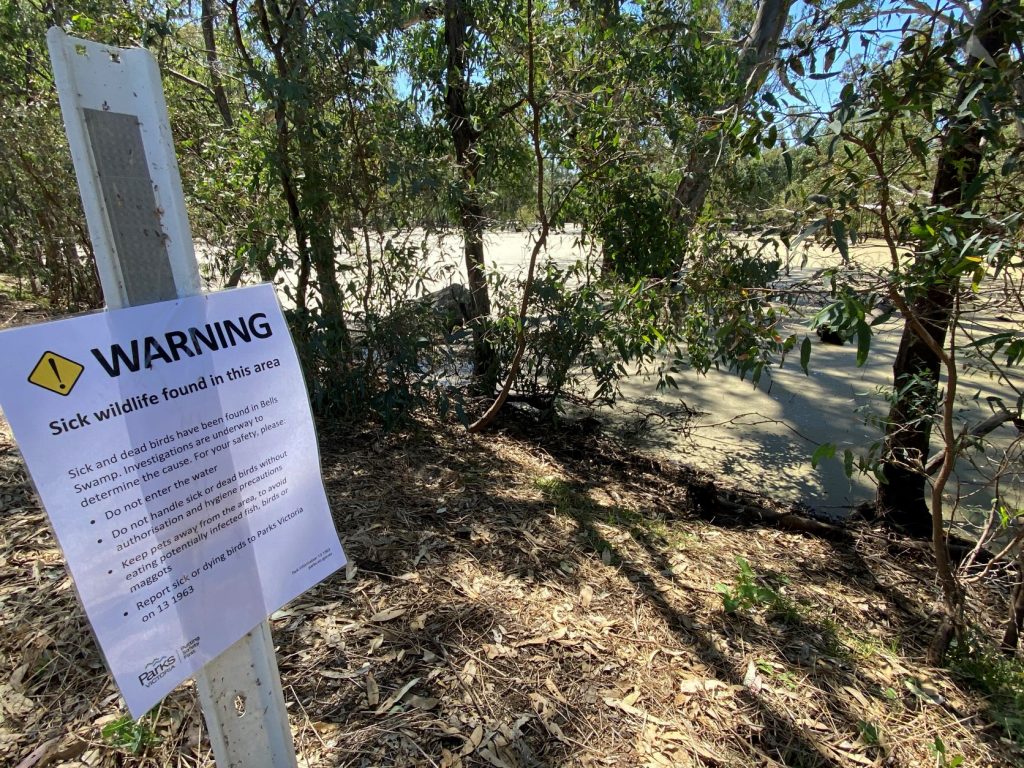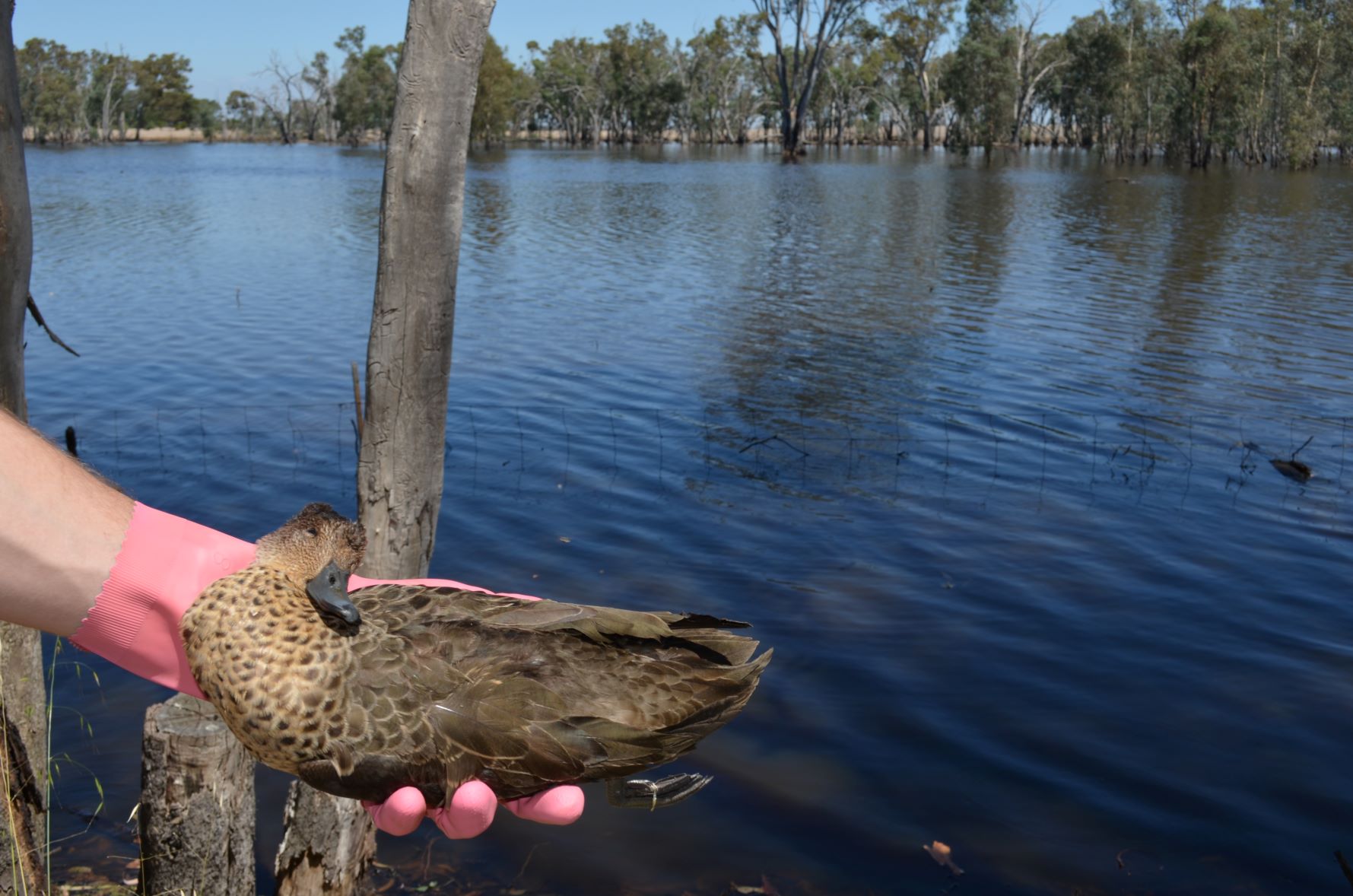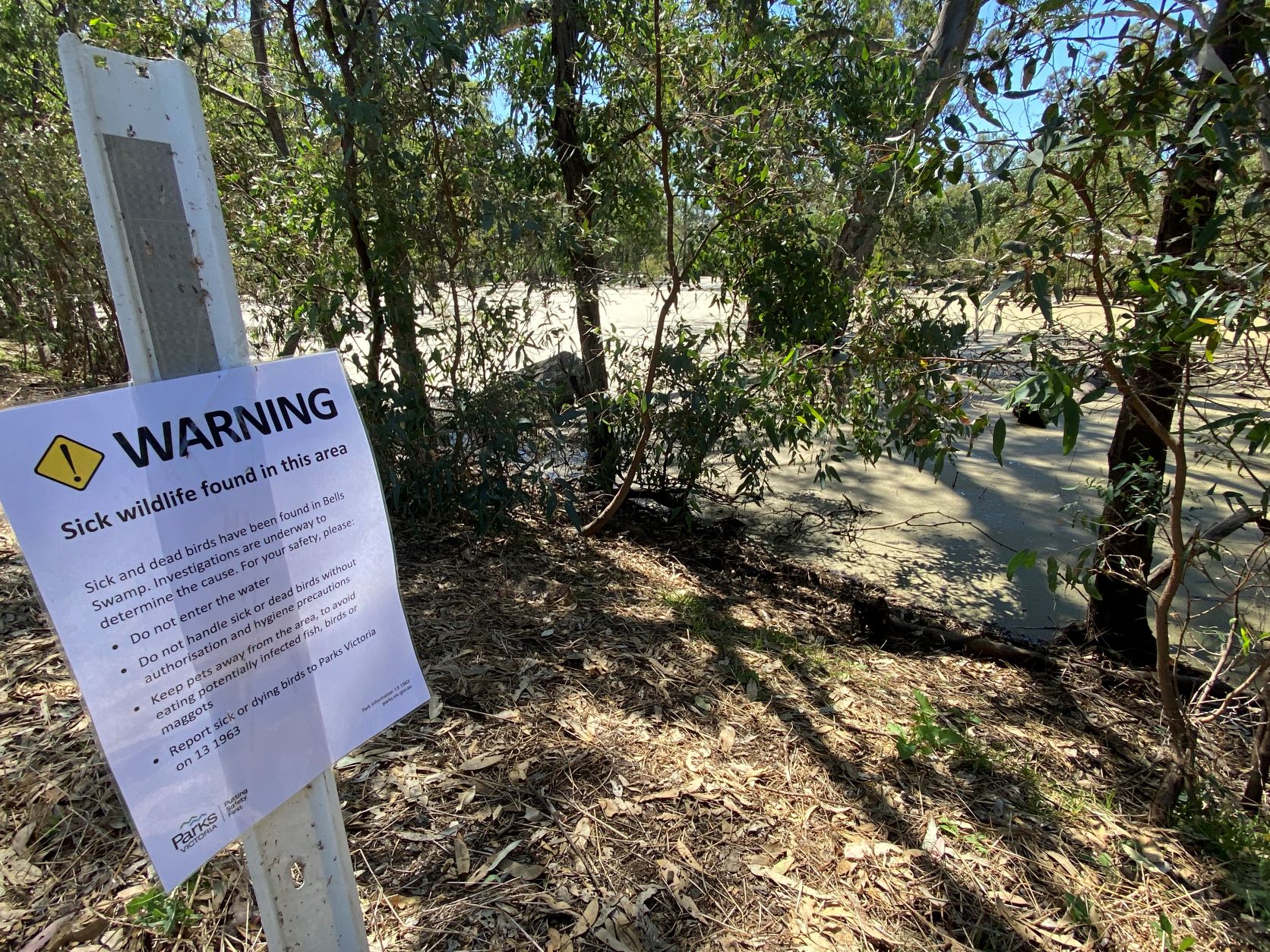Lisa Dennis
Parks Victoria and wildlife experts are investigating a mass casualty event involving ducks and other birdlife at Bells Swamp Conservation Reserve at Neerman just outside Maldon.
Local wildlife carer and volunteer wildlife rescuer Sam told the Express the issue was first reported on January 29.
“I saw a post on Castlemania where a local resident reported seeing 13 dead ducks at the site and queried what had occurred. As a bird lover I decided to head out and investigate,” he said.
Sam and two fellow volunteers initially located 25 deceased wood ducks, teal ducks, pacific black ducks, purple swamp hens and dusky moorhens, and sick ducks exhibiting symptoms of C. botulinum (avian botulism) were also recovered and taken into care.
“Initially there were fears that it may have been an act of illegal duck shooting, however on closer investigation it appears that the ducks may have died as a result of poisoning or disease,” he said.
Over the past week the wildlife rescuer and fellow volunteers have visited the site daily and have now retrieved close to 150-plus dead birds and retrieved 49 sick birds that are now in care for rehabilitation and release back into the wild if they improve.
“The sick birds are a mix of pacific black, teals, wood ducks, herons, coots and a darter,” he said.
“The majority of the sick and deceased birds are pacific black ducks, which are surface feeders. This raises concerns that there could be a bacterium on the surface such as C. botulinum or some kind of chemical poisoning may have occurred.”
Sam said there was initially a white noxious smelling foam on the surface at the site the dead birds had been located, but that had since cleared. However, each day more deceased ducks are being retrieved.
“Sick birds have now been sent to Melbourne Zoo and other locations for treatment and a further 75 deceased birds have been sent off for testing by various experts in the field to try and determine the cause,” Sam said.
Rescuers and experts have a few theories about what the cause of the deaths could be including potential C. botulinum with the bacteria washed out of the soils during the October floods or as a result of ‘blackwater’, which starves the water of oxygen after flooding.
In the meantime, volunteers such as Sam continue to retrieve bodies to try to curb the spread of potential C. botulinum to healthy birds.
Parks Victoria team members placed signage along roadways throughout the swamp on Friday to alert community members that diseased birds had been located in the area.
“There are a lot of birdwatchers who visit the area. It’s really important that people don’t handle the birds for fear of contracting or passing on contaminants,” Sam said.
“The initial casualties were in the south west corner of the swamp, but now the issue seems to have widened to the whole conservation area,” Sam said.
Parks Victoria district manager Suzanne Hughes confirmed they were investigating reported bird deaths at Bells Swamp Nature Reserve.
“At least 50 birds have been found dead, with further as yet unconfirmed reports being received. Samples have been taken for testing and we expect to get the results early this week,” Ms Hughes said.
“While we are waiting for the results, Parks Victoria has put up signage at Bells Swamp to warn the public of the potential health risk. We ask that people stay away from the reserve until further notice.”










